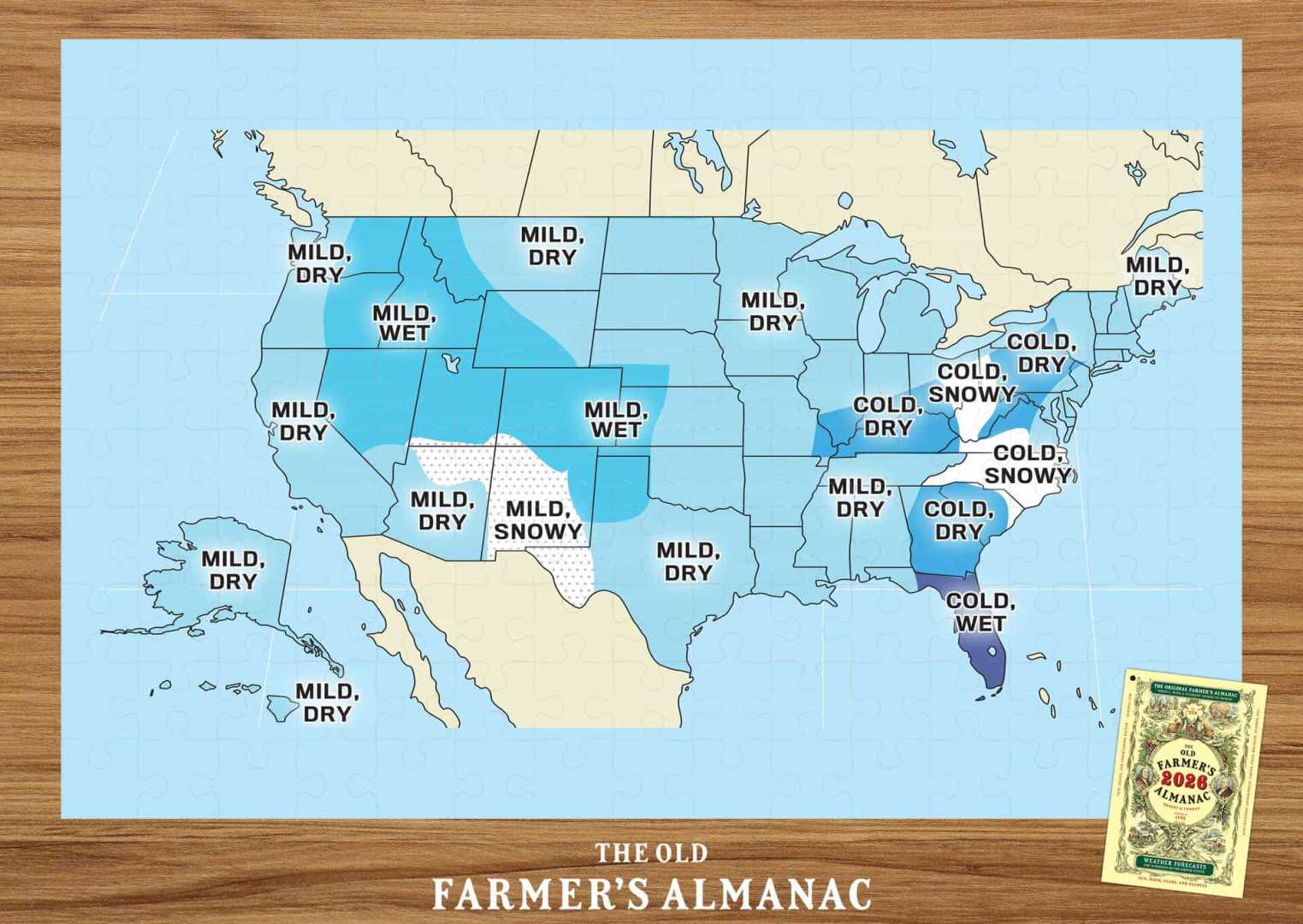Winter Forecast Predicts Milder Conditions Across Many U.S. Regions

STATEN ISLAND, N.Y. — The Old Farmer’s Almanac has released its winter forecast, predicting a mild winter across much of the United States. The forecast suggests that most areas will experience near-normal to slightly warmer temperatures, while some regions, including the Appalachians and Ohio Valley, may see colder-than-average conditions.
According to the Almanac, precipitation will generally be below normal across the country, with some exceptions. States like Florida, the Intermountain region, and parts of the eastern Desert Southwest could receive above-average precipitation this winter.
Regarding snowfall, the report indicates that most of the U.S. is expected to receive near or below-normal snowfall. However, areas including the Carolinas, southern Appalachians, and parts of the southern Rockies may experience above-normal snow.
In New York, the winter forecast varies by region. New York City, categorized as part of the Atlantic Corridor, is anticipated to face milder and drier winter conditions. The coldest periods are expected in mid- to late December and again in early and late January.
The Northeast region, which includes much of upstate New York, is also forecast to be warmer than usual with below-average snowfall. However, the snowiest periods in this region are expected from mid-November through early February, particularly in mid-December.
In the Lower Lakes region, encompassing cities like Buffalo and Syracuse, milder winter conditions are also expected, with snowfall levels near or below normal. The most significant snowfall events are predicted to occur in late November and early to mid-March.
Earlier this month, AccuWeather provided an outlook for New York City, forecasting between 17 to 21 inches of snow this winter, which is less than the historical average of 29.8 inches. This winter’s expected snowfall exceeds last year’s total of 12.9 inches.
In contrast, Buffalo is projected to receive between 90 and 100 inches of snow, close to the historical average of 95.4 inches. The slight increases in average temperatures and varying snowfall amounts highlight the changeable nature of winter conditions in these regions.
